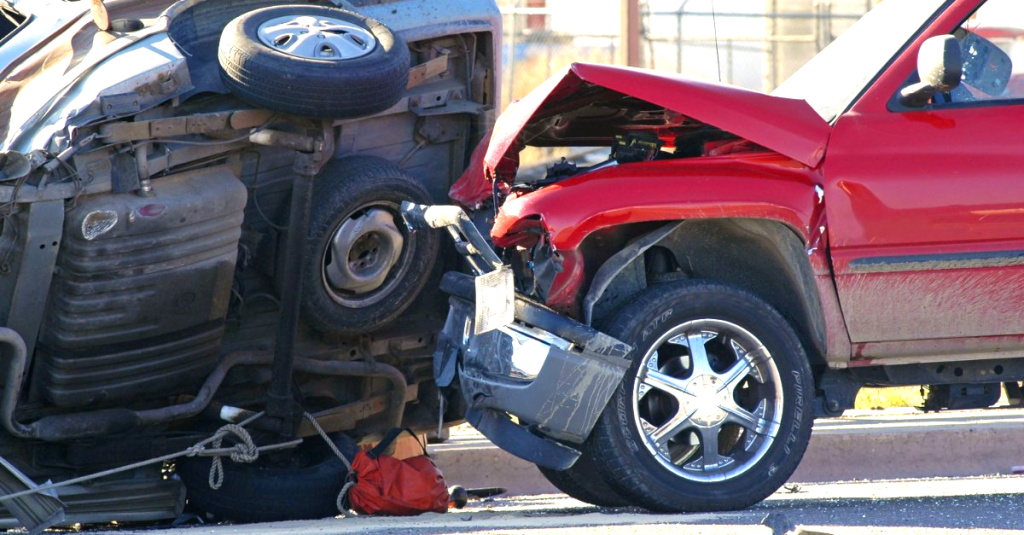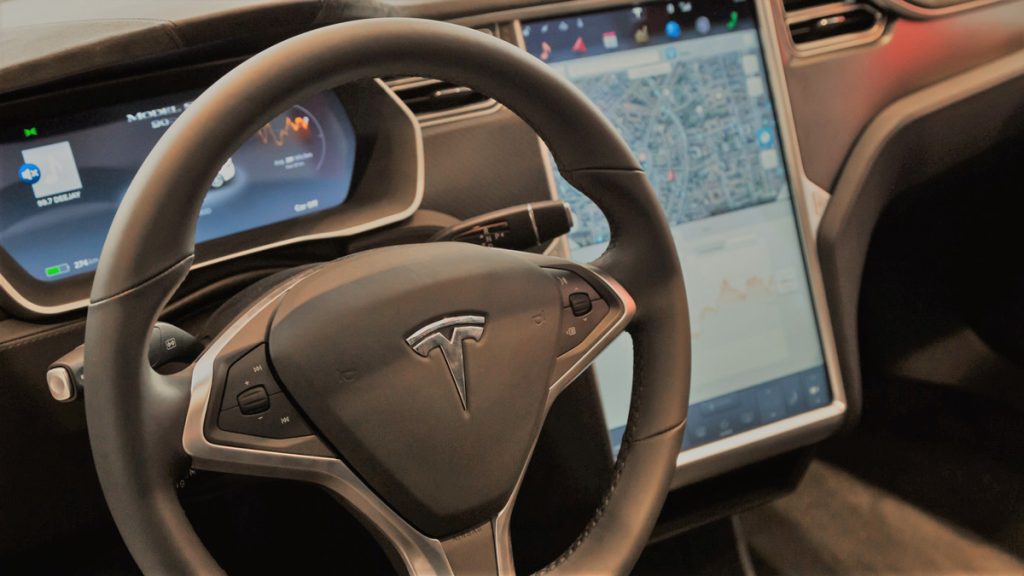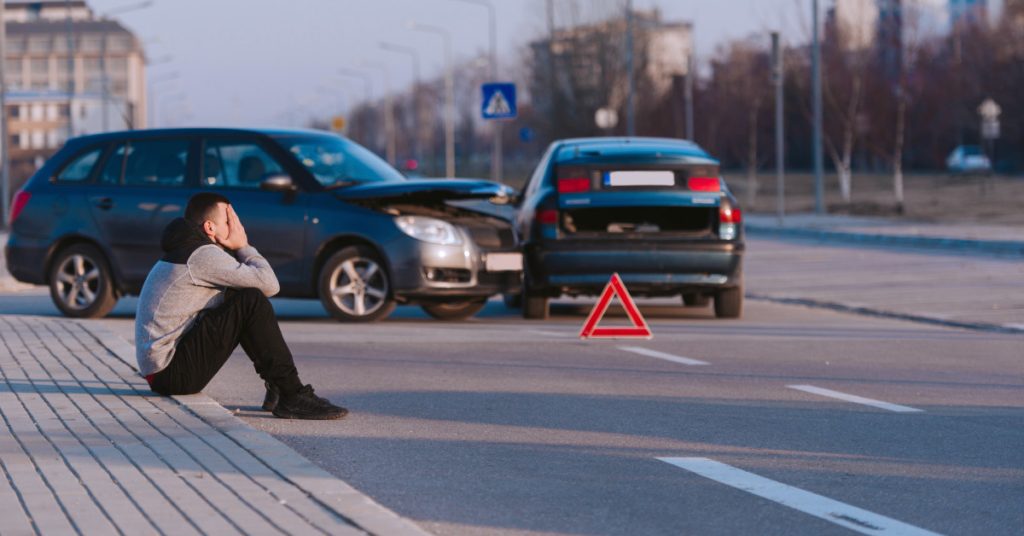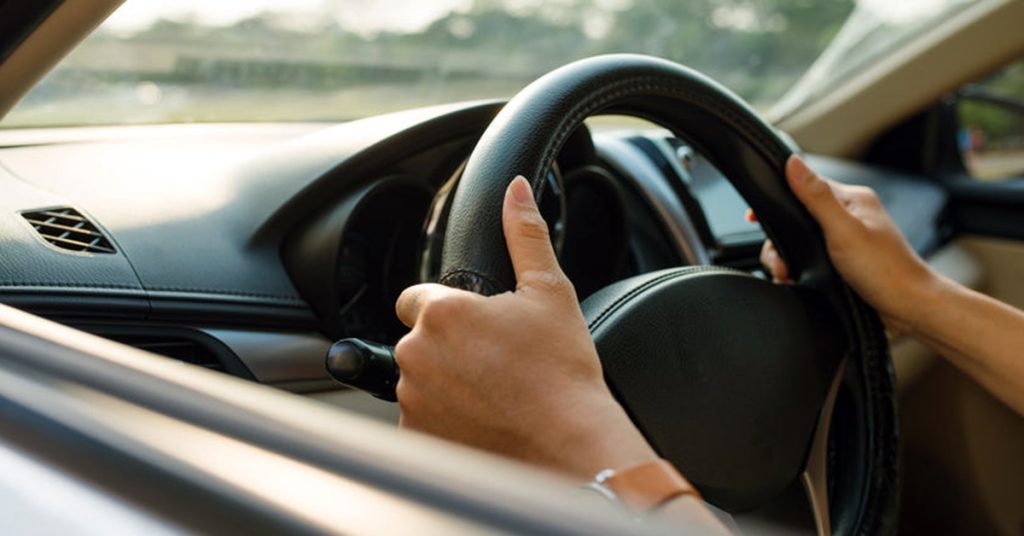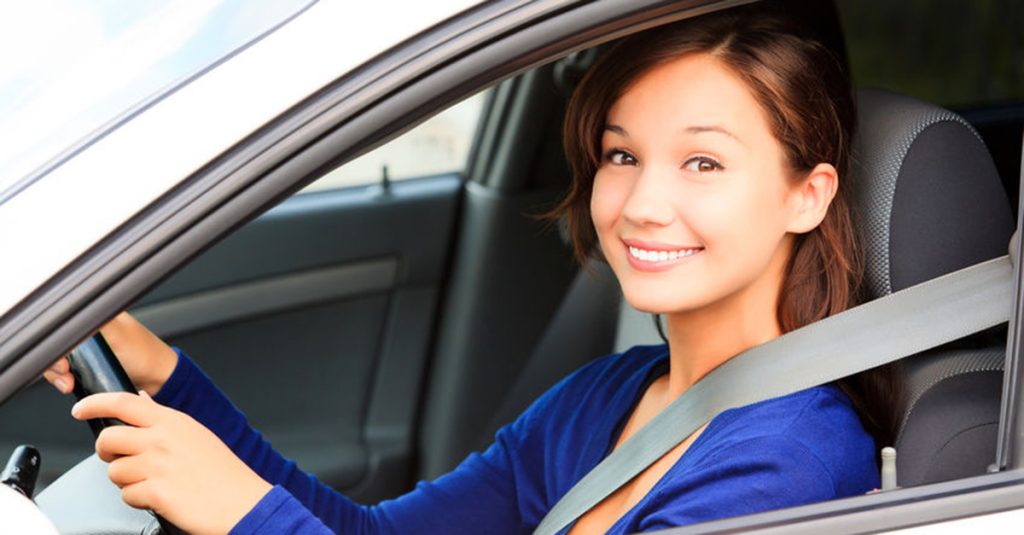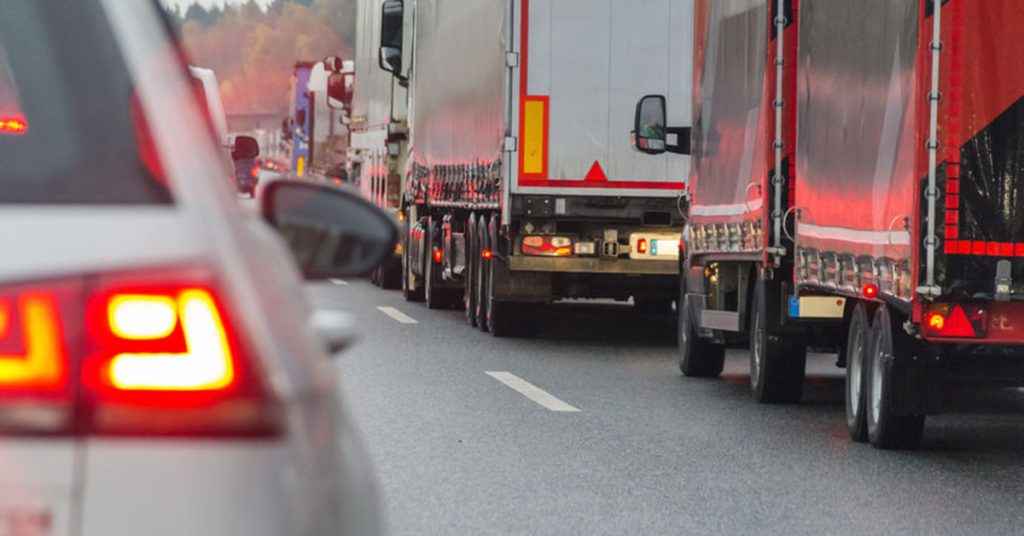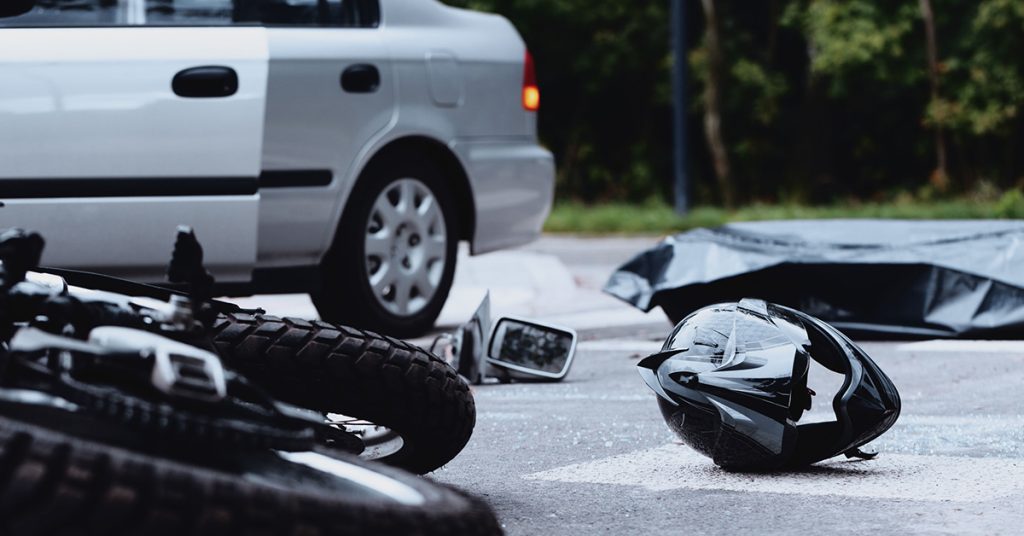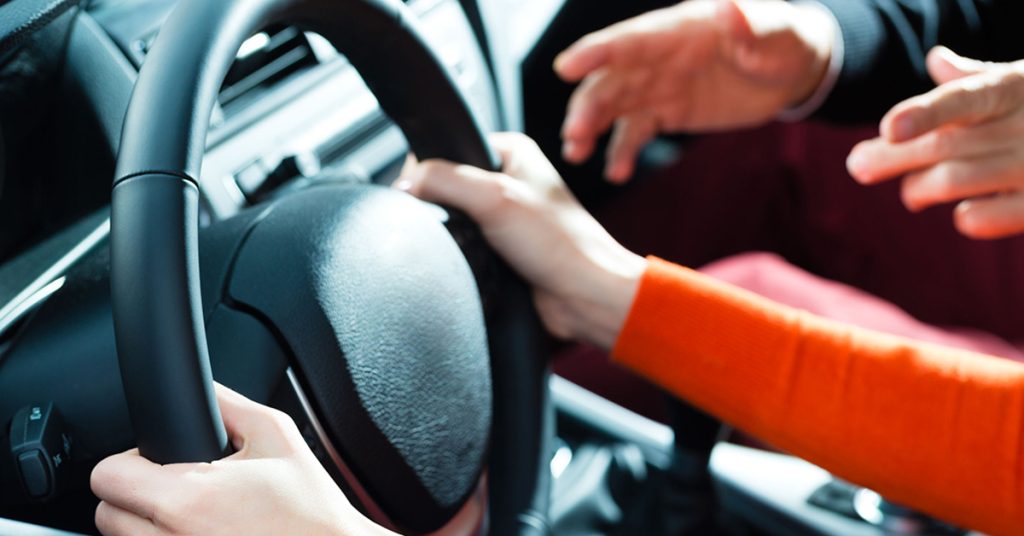Posts Tagged ‘“Car accident lawyers”’
New Safety Campaign Encourages Drivers to Stop Deadly Trend of High-Speed Accidents
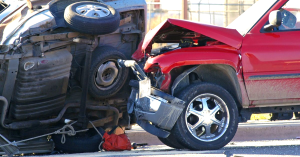
Speed-related crashes claimed 17 more percent more lives during 2020, according to the NHTSA.
Many of us have resumed our routines or transitioned to a new normal after the pandemic. Except in our cars. Early in the pandemic, drivers began a dangerous trend of driving less and speeding more into open roads, resulting in very serious crashes and injuries.
This past summer, the National Highway Traffic Safety Administration (NHTSA) announced a new public outreach campaign to address the growing danger of speed-related accidents.
In this blog, we share a few statistics from the NHTSA’s “Speeding Wrecks Lives” campaign to encourage awareness about the consequences of speeding here in Massachusetts.
The impact of speeding during the pandemic:
- More than 11,000 people were killed by speeding crashes in 2020, a 17 percent increase from 2019.
- Overall, speeding caused 29 percent of all traffic deaths in 2020.
- Younger drivers age 18-44 were behind the wheel in 25 percent of fatal speed-related crashes.
- Younger male drivers between the ages of 15 and 24 were involved in many of these crashes.
Another critical benchmark involves young children. The Governors Highway Safety Association reports speed-related deaths of pedestrians younger than 15 more than doubled between 2018 and 2020.
In June, the State House News Service reported that Massachusetts reached an 11-year high in traffic deaths during 2021. In the article, a Massachusetts DOT board member specifically mentioned the impact of speeding as well as aggressive driving since the pandemic began.
Fatal Pedestrian Crashes Are More Likely At Higher Speeds
The Federal Highway Administration has long stressed the importance of managing speeds on the roads, citing data from the AAA Foundation for Traffic Safety. The data shows pedestrians have a much higher chance of survival when hit in car crashes at lower speeds.
When a pedestrian is hit by a car traveling 23 mph, they have a 10 percent chance of death, compared to a 50 percent chance of death when a car is traveling 42 mph. Pedestrians are 90 percent more likely to die when hit by a car traveling 58 mph.
Why Speeding is So Dangerous
With this new campaign, the NHTSA continues to educate the public on the specific hazards of high-speed accidents.
Drivers who speed are more likely to lose control of their steering. Even when the driver sees a pedestrian or identifies a potential traffic hazard, they may not have time to stop or change lanes in time if they are speeding. Drivers have more control when they travel at lower speeds and really take time to look for pedestrians and cyclists. When a driver looks, this naturally slows them down and raises their awareness of road conditions. With more pedestrians and cyclists out than ever, drivers should really look, whether they are traveling through downtown areas, school zones or quiet back roads.
When drivers disregard the speed limit, they may also let their guard down in other ways. Speeding can be a springboard for drivers to engage in aggressive driving and road rage.
Free Legal Consultation – Boston Auto Accident Lawyers
With more than 125 years combined experience, Breakstone, White & Gluck has extensive experience representing those injured in car accidents, pedestrian crashes and bicycle collisions in Massachusetts. We provide experienced and aggressive representation throughout all stages of motor vehicle accident claims, from investigation to trial and appeal if necessary.
If you have been injured by negligent driving, contact our lawyers for a free legal consultation at 800-379-1244 or 617-723-7676 or use our contact form.
Tesla Has Highest Number of Crashes Involving Self-Driving Cars, Driver-Assist Systems, New Data Shows

New data shows self-driving cars and driver-assisted systems were involved in hundreds of car accidents over a 10-month period. Tesla vehicles were tied to 70 percent of these car crashes.
Days after expanding its Tesla safety investigation, the federal government has released 10 months of data showing nearly 400 crashes involving self-driving and driver-assisted vehicles, according to The New York Times. Tesla vehicles were involved in 70 percent of the self-driving and driver-assisted crashes.
Of 392 crashes, 273 involved Tesla vehicles operating with Autopilot, Full Self Driving or related features, according to the National Highway Traffic Safety Administration (NHTSA). Six people were killed while others were injured. The crashes ranged from serious collisions to fender benders or smaller incidents.
- Honda vehicles were involved in 90 incidents.
- Waymo, a driverless taxi service in Arizona, was involved in 62 crashes. The service is owned by Google’s parent company.
- The G.M. Cruise taxi service was linked to 23 accidents in the San Francisco area.
- Subaru reported 10 crashes; Ford, G.M., BMW, Volkswagen, Toyota and Porsche each reported 5 or fewer.
Last year, the NHTSA issued an order requiring automakers to report car accidents involving vehicles with driver-assist systems or fully-automated vehicles being tested on public roads. This is the first data release under the order and an NHTSA official cautioned the public not to make conclusions yet.
The data covers just 10 months, but provides no context on the total number of vehicles each manufacturer has on the road with automated technologies.
Tesla has about 830,000 vehicles with driver-assisted technologies on the road, according to The New York Times. But other companies, such as Ford and GM, also have technologies that allow hands-free driving in certain situations. They have sold fewer models.
In addition, automakers have long sold cars, trucks and SUVs with some level of driver-assist systems, such as cruise control or automatic braking when traffic ahead slows. With this data release, the NHTSA said it plans to keep collecting data on auto crashes involving these features and technologies, as a guide for future safety requirements.
NHTSA Expands Investigation of Tesla Autopilot Feature
The data comes as the NHTSA investigates years of car crash reports involving Tesla’s Autopilot feature. On June 9, the agency announced it was expanding the probe to include all four Tesla cars – Model S, Model X, Model 3 and Model Y – from 2014 and 2021, according to The New York Times.
The agency said it was upgrading its preliminary evaluation to an engineering analysis, a step required before a safety recall, according to The New York Times. The NHTSA has set a one-year timetable for the review.
The Texas-based company designs the world’s most popular luxury vehicles, many of which use the Autopilot technology to perform key aspects of driving, such as steering, accelerating and braking automatically within the lane. The NHTSA is investigating whether the Autopilot fails to prevent drivers from diverting their attention from the road and engaging in other unsafe behaviors.
This wouldn’t be the first Tesla recall. In November 2021, Tesla recalled almost 12,000 vehicles from its Full Self Driving beta test. This was a version of Autopilot designed for city driving. The company reported a software update could unexpectedly activate a vehicle’s emergency brakes.
Tesla Self-Driving Crash and Sleeping Driver Report in Massachusetts
Tesla crashes have made headlines across the country.
There was a bizarre story on the sleeping driver traveling in a Tesla vehicle on the MassPike back in 2019. A driver captured video of another driver and his passenger traveling in a Tesla vehicle in the next lane. Both were in a heavy sleep.
State Police called the behavior “extremely dangerous” and said the driver would be subject to criminal charges if they ever identified and located him. That never happened.
But State Police caught the driver in a Tesla self-driving crash in West Bridgewater in 2020.
According to news reports, a state trooper pulled over a college student in an SUV on Route 24 in West Bridgewater. A Tesla driver slammed into the trooper’s cruiser, then hit the 21-year-old’s vehicle as she reached for her registration. The driver was reportedly operating in Tesla’s Autopilot mode, according to a NBC Boston report. He was charged with negligent operation.
Free Legal Consultation – Boston Car Accident Lawyers
Breakstone, White & Gluck has over 125 years of combined experience successfully obtaining record recoveries for clients injured by negligent driving. Our attorneys are experienced in handling cases involving car accidents and commercial truck crashes across Massachusetts. We represent clients at all stages of motor vehicle accident cases, from insurance claims through to trial and appeal, if necessary.
For a free legal consultation, call 800-379-1244 or 617-723-7676 or use our contact form.
U.S. Traffic Deaths Reached a 16-Year High in 2021, Early Estimates Show
 Traffic fatalities rose dramatically last year as we worked to emerge from COVID-19. The National Highway Traffic Safety Administration (NHTSA) has released early estimates showing 42,915 people died in motor vehicle crashes in 2021, up 10.5 percent from 2020. In Massachusetts, early estimates show a 20 percent increase.
Traffic fatalities rose dramatically last year as we worked to emerge from COVID-19. The National Highway Traffic Safety Administration (NHTSA) has released early estimates showing 42,915 people died in motor vehicle crashes in 2021, up 10.5 percent from 2020. In Massachusetts, early estimates show a 20 percent increase.
There were more vehicles on the road last year. The NHTSA reported an 11 percent increase in vehicle miles traveled in 2021 compared to 2020. There was only a slight decline in the fatality rate per mile traveled.
But the projection shows the highest number of traffic fatalities since 2005 – and the largest annual increase in traffic deaths since 1975, when the federal traffic data system began. Across the board, drivers, pedestrians, bicyclists and motorcyclists all faced more treacherous conditions than before the pandemic, even as many traveled less.
Rise in Pedestrian and Bicycle Fatalities
Many of us have been walking more since the pandemic began. It’s nice to just step outside and start getting some exercise. However, the walk can be very dangerous. Traffic may look lighter at times. Open roads seem to encourage drivers to speed and traffic patterns are still highly irregular.
Nationwide, pedestrian traffic deaths increased 13 percent in 2021, while fatal bicycle accidents climbed 5 percent. There was also a 9 percent increase in motorcycle accident fatalities.
Speed-Related Crashes Up 5 Percent
The NHTSA reports a 5 percent rise in traffic fatalities caused by speed-related crashes in 2021. This follows a dangerous 17 percent jump from 2019 to 2020. Overall, speeding is responsible for more fatal crashes now than before the pandemic.
There were also more fatalities in multi-vehicle crashes last year, as vehicles traveled more miles. These fatalities climbed 16 percent in 2021. There was a rise from March to August 2021, then November to December. April 2021 saw the greatest increase in fatalities in multi-vehicle crashes.
Alcohol-Related Crashes Rise
One of the most troubling trends of the pandemic was the rise in drunk driving and injuries. In 2020, there was a 16 percent rise in traffic fatalities stemming from police-reported, alcohol-involvement crashes. This came as workers and students stayed home. In 2021, this trend continued, with an estimated 5 percent increase in these crashes.
More Traffic Deaths Among Seniors
There were fewer traffic fatalities among older Americans in 2020 as more people stayed home or suffered from COVID-19. But last year, as senior citizens (those 65 and older) got back out, there was a 14 percent increase among traffic fatalities.
13 Percent Increase in Traffic Fatalities Involving at Least One Large Truck
In 2021, there was a 13 percent increase in fatalities in crashes involving at least one large truck (one with a gross vehicle weight rating of more than 10,000 lbs). The NHTSA counts both commercial and non-commercial vehicles.
Trucking activity has drastically changed since the start of the pandemic. More of us are ordering groceries, clothing and household supplies from the convenience of our homes and we may see large trucks and delivery vans several times a day.
The NHTSA reports traffic fatalities in crashes involving at least one large truck increased from April to July 2021 and then again from November to December 2021.
Free Legal Consultation – Boston Car Accident Lawyers
Founded in 1992, Breakstone, White & Gluck has been consistently recognized for our results for our clients. Our personal injury attorneys provide experienced and aggressive representation to those injured in car accidents, pedestrian accidents and motorcycle crashes across Massachusetts.
If you or a loved one have been injured by another driver’s negligence, learn your legal rights for seeking compensation for your recovery. For a free legal consultation, contact Breakstone, White & Gluck and at 800-379-1244 or 617-723-7676 or use our contact form.
Watch for Savings, But Keep Paying Your Massachusetts Auto Insurance Premiums During the Pandemic
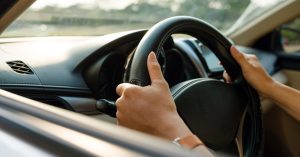 It has been nearly a year since Massachusetts called the COVID-19 state of emergency. Your daily routine has completely changed and you are not driving very often. Do you still need to buy auto insurance at this point?
It has been nearly a year since Massachusetts called the COVID-19 state of emergency. Your daily routine has completely changed and you are not driving very often. Do you still need to buy auto insurance at this point?
Yes. Under state law, you are required to purchase a Massachusetts auto insurance policy if you have a driver’s license and register a vehicle. If you cause a car accident in Massachusetts, you are responsible for compensating anyone you have injured for their medical expenses and other financial losses. You also have to pay for property damage.
Auto insurers granted Massachusetts drivers some discounts last year, but lawmakers and consumer advocates are starting to raise the question of further discounts.
Calls for Action on Reducing Auto Insurance Premiums in Massachusetts
On Feb. 12th, the Lawrence-Eagle Tribune reported state Sen. Barry Finegold, D-Andover, and other legislators have asked the state Division of Insurance to review insurance rates, premiums and losses. They also want insurers to offer refunds from profits.
Attorney General Maura Healey’s office also recently asked regulators to reduce personal automobile insurance premiums by at least 25 percent, according to the newspaper. Her office cited data showing the frequency of liability coverage claims fell more than 50 percent between 2019 and 2020. There was a 70 percent drop in the frequency of collision coverage claims.
Our Massachusetts Auto Insurance Tips During COVID-19
Purchase the Minimum Auto Insurance
Under Massachusetts law, you have to purchase the required minimum coverage limits. There has been no change to the coverage limits during COVID-19.
- Bodily Injury to Others, $20,000 per person; $40,000 per accident
- Personal Injury Protection (PIP), $8,000 per person, per accident
- Bodily Injury Caused by an Uninsured Auto, $20,000 per person; $40,000 per accident
- Damage to Someone Else’s Property, $5,000 per accident
These are low coverage limits. In most cases, drivers should purchase more to adequately protect themselves and others if they cause a car accident. The key with auto insurance is you must purchase the right amounts and coverage types to protect yourself. Learn more about the different coverages in our article, “Understanding and Buying Massachusetts Car Accident Insurance.”
How Auto Insurance Protects You
Right now, you may be asking why you need to buy an auto insurance policy at all. This is a good time to remind you of all the ways your policy can work for you. Most drivers can appreciate that they are required to purchase auto insurance under Massachusetts law. At the very least, under M.G.L. c. 90, § 34J, you may face a fine between $500 to $5,000 if you are caught operating without insurance. Most drivers can also appreciate that auto insurance can protect them financially if they make a mistake and cause someone injury in a car crash.
But there are other protections. First, you may need your auto insurance to protect yourself. Even if another driver was at fault in a car crash, you may have to file a claim with your own policy for your medical expenses and lost wages. This would be true if you were injured by an uninsured or underinsured driver. This would also be the case if you were injured in a hit-and-run accident and could not identify the driver.
If you are a cyclist, you may be entitled to pursue a claim against another driver for your injuries in a bicycle accident. However, having your own auto insurance policy can provide necessary resources to help you recover, especially if the driver does not have auto insurance.
Another benefit is auto insurance can protect our loved ones or those living in our household. Call your insurance agent and ask to add these licensed drivers to your policy. They may be able to draw on the coverage should they ever be injured in a car crash or a bicycle accident and not have coverage elsewhere.
Keep Massachusetts Auto Insurance Payments Current
It is fine to evaluate your auto insurance. But do not withhold or miss an auto insurance premium payment or you could risk your insurer cancelling your policy. If you are facing financial hardship, one option is you can set up a payment plan over the year. In doing so, you may be losing a pre-payment discount, but it may be the best approach for your situation right now.
Before you call your insurer or insurance agent, learn as much as you can. Read the state advisory on Motor Vehicle Insurance Installment Payment Plans.
Seek Quotes from Massachusetts Insurance Agents
In Massachusetts, you can purchase insurance directly through an insurer or an insurance agent. Call and ask if you qualify for any discounts based on your current driving routine, vehicle, employer or group memberships. At a minimum, insurers should offer a discount for traveling more than 5,000 miles in a year.
It is usually worth requesting quotes from more than one insurance agent or companies. In Massachusetts, some insurance agents can offer quotes from multiple companies. Expect most to represent just a single company. Here is the state of Massachusetts insurance agent database.
Check for Discounts and Savings
The best types of discounts and savings are those you achieve just by checking in with your auto insurance agent. For instance, you may be eligible for a discount because you logged fewer than 5,000 miles on your car in 2020.
In some cases, this conversation may not result in savings. You may need to add someone to your household policy or purchase business coverage because you started using your vehicle for work. Whatever your situation, you have a responsibility to keep your auto insurer updated so you have proper coverage should you need it. Many people put their auto insurance coverage at risk without even realizing it when they move and start garaging their vehicle in a new location. Your auto insurance is calculated in part based on where you garage your vehicle. College students who take their vehicles to campus also need to update auto insurers.
Where to Learn More About Massachusetts Auto Insurance
We mentioned a few of our auto insurance articles in this blog. We also invite you to read our other auto insurance articles, including “What Every Massachusetts Bicyclist Needs to Know About Car Insurance” and “Massachusetts Motorcyclists: Buy the Right Types of Auto Insurance to Protect Yourself and Your Finances.”
Free Legal Consultation – Boston Car Accident Attorney
At Breakstone, White & Gluck, our Boston car accident lawyers are known for our commitment to pursuing the best financial result for clients. If you have been injured by someone else’s negligent driving, you may be entitled to seek compensation for your injuries. We represent clients throughout Massachusetts, including in Boston, Quincy, Cambridge, Somerville, Everett, Brookline and Arlington.
For a free legal consultation, contact our attorneys at 800-379-1244 or 617-723-7676 or use our contact form.
For Teens, Driving Safely Starts With Seat Belts
Teen Driver Safety Week is Oct. 18-24, 2020. Breakstone, White & Gluck is sharing articles to encourage parents and teens to discuss safe driving decisions.
 Seat belts are a simple step for safety. As a parent, you probably remind your child to buckle their seat belt before each ride. But when your teen becomes a licensed driver, you won’t always be there. Still, what you say matters. Teens are twice as likely to wear a seat belt as a driver or passenger when parents set rules and monitor their driving behavior, according to the Teen Driver Source website, which is operated by the Children’s Hospital of Philadelphia.
Seat belts are a simple step for safety. As a parent, you probably remind your child to buckle their seat belt before each ride. But when your teen becomes a licensed driver, you won’t always be there. Still, what you say matters. Teens are twice as likely to wear a seat belt as a driver or passenger when parents set rules and monitor their driving behavior, according to the Teen Driver Source website, which is operated by the Children’s Hospital of Philadelphia.
Tell your teen you expect them to wear a seat belt whenever they travel in a motor vehicle. This includes when they drive and when they are traveling as a passenger. As a second step, put this in writing. Find a teen driving safety agreement with your teen and state this is one of your expectations. If you catch your teen driving without their seat belt, you can step back their access to the keys until you have a discussion.
Seat belts are required by law. Wearing a seat belt is required by law in Massachusetts. Drivers and their passengers must both wear seat belts.
Seat belts protect against deadly force. The goal isn’t to scare your teen. But the reality is cars, trucks and other vehicles are heavy and powerful machinery. We all need to wear seat belts to protect against the potential force of a car crash.
Seat belts reduce the risk of fatal injury to front seat passengers by 45 percent, according to Teen Driver Source. They also reduce the risk of moderate to critical injury by 50 percent.
Seat belts also reduce the risk of ejection from the vehicle. Those who do not wear seat belts are 30 times more likely to be ejected from a vehicle during a traffic crash, according to Teen Driver Source. When a person is ejected from their vehicle, they are more likely to die in a crash. This was the case for 3 out of 4 people.
How seat belts prevent injuries. Seat belts are designed to spread crash forces across the stronger bony parts of the body, including the shoulders, rib cage and pelvis, according to the Institute for Highway Safety (IIHS). They are also designed to prevent occupants from being ejected from a vehicle.
Drivers and passengers should all wear seat belts – to protect themselves and each other. If there is an accident and one of the vehicle’s occupants is not wearing one, they could be ejected and increase the risk of injury to others in the vehicle.
In a frontal crash, drivers and front passengers are left at an increased risk for injury if the back-seat passengers are not wearing seat belts. Exposure to unbelted occupants increases the risk of injury or death to other vehicles by 40 percent, according to the IIHS.
More People Are Wearing Seat Belts in Massachusetts
The good news is more people appear to be wearing seat belts in Massachusetts. In 2018, the state conducted a seat belt usage observation study, reporting 81.58 percent of drivers and front outboard passengers were observed to be wearing seat belts. This was 7.9 percentage points over the year before and the highest ever observed rate in Massachusetts.
To reach this number, the state observed 28,265 drivers and front outboard passengers in 24,2145 vehicles at 147 observation locations. You can learn more by reading the study.
According to the IIHS and other organizations, states with primary enforcement seat belt laws have higher seat belt use rates. In 2019, the IIHS reported states with primary enforcement laws saw 91 percent seat belt use compared to 86 percent. Massachusetts has a secondary enforcement seat belt law, meaning police can stop drivers for traffic violations, then issue citations for failure to wear seat belts. But police cannot stop drivers just because they are not wearing seat belts.
If you are parent or teen, we hope this is good background information. The point is you should wear your seat belt every time you ride – and encourage others to do the same.
Free Legal Consultation – Boston Personal Injury Lawyers
With more than 100 years combined experience, Breakstone, White & Gluck fights for the rights of those injured by the negligence or wrongdoing of others. Our personal injury attorneys specialize in the handling of car accidents, truck accidents and bus collisions in the Boston area. If you have been injured, learn your legal rights. For a free legal consultation, call our attorneys at 800-379-1244 or 617-723-7676. You can also use our contact form.
To learn more about teen driving safety and other topics, please visit our Project KidSafe campaign page.
National Teen Driver Safety Week Offers Safety Reminders for Massachusetts Families
 Motor vehicle crashes are the leading cause of death for teens. Each year, National Teen Driver Safety Week highlights safety insights for families and teens. This year, the event runs from October 18-24th. We encourage you to follow the National Highway Traffic Safety Administration and Teen Driver Source for more information. Teen Driver Source is operated by the Center for Injury Research and Prevention at Children’s Hospital of Philadephia, which offers Facebook and Twitter feeds.
Motor vehicle crashes are the leading cause of death for teens. Each year, National Teen Driver Safety Week highlights safety insights for families and teens. This year, the event runs from October 18-24th. We encourage you to follow the National Highway Traffic Safety Administration and Teen Driver Source for more information. Teen Driver Source is operated by the Center for Injury Research and Prevention at Children’s Hospital of Philadephia, which offers Facebook and Twitter feeds.
According to the National Highway Traffic Safety Administration, the greatest dangers teen drivers face are: alcohol consumption, inconsistent or no seat belt use, distracted driving, speeding and driving with passengers in the vehicle. This year, COVID-19 has introduced a new concern. Teens are driving far less and risk losing core skills. This is where National Teen Driver Safety Week comes in as an important resource this year.
Driving Safety Contract. If you follow Teen Driver Safety Week, you may learn about teen driver contracts. You can also print this parent-teen driving contract from the Centers for Disease Control and Prevention (CDC). Make your own edits and ask your teen to sign as a condition for using your vehicle. Give your teen a copy of the document to file away and review. This is a good way to lay out expectations for your teens and what will happen if they violate the agreement.
Make Sure Teens Get Enough Driving Time. If teens are not driving as much during COVID-19, they risk falling behind on fundamental skills. To prevent this, encourage your teen to drive regularly. When you go out with your teen, split the driving responsibilities so you know they are logging at least some time behind the wheel and you can monitor their progress.
Hold back judgment and sharp comments if you see some of their skills have regressed. This may happen. Just help them get practice in where they need it. Take advantage of empty parking lots and slower times of the week. You can get them back on track.
Drive Around Town With Your Teen. When you can, walk and drive around your community with your teen, including during the morning and afternoon commutes. This gives your teen a preview of what may come when they pull out of the driveway alone. You may see more pedestrians and cyclists in areas. You may see parking changes and restaurants offering sidewalk service. Share observation with your teens and try to make helpful suggestions to help them drive safely and avoid car accidents.
Stress the Importance of Slowing Down. Speed is a factor in nearly 30 percent of all fatal crashes involving teen drivers, according to AAA. Teens often have a heavy foot on the gas pedal and this only changes as they gain experience. For now, if teens can simply slow down, they can significantly reduce their risk of a collision.
Start by helping your teen recognize speed limits because they are not always posted right in front of them. While they should have learned this in driver’s ed, new drivers can use a reminder from time to time. Massachusetts sets a default speed limit of 30 mph in thickly settled and business areas, unless posted otherwise or an individual community has opted to lower the speed to 25 mph. School zones and work zones are 20 mph.
Encourage your teen to travel at or below the speed limit, especially in residential neighborhoods. By doing so, they reduce their risk of causing a car accident due to inexperience in the first few months or year of driving. They reduce their chance of causing themselves or someone else serious injuries and all the emotions and stress.
Reduce Distractions. Slowing down is the most effective tool for safe driving. It’s also important to reduce distractions. This means setting aside cell phones and limiting conversation with passengers in the vehicle. Sure, your teen is going to engage in discussion with others in the car. But try to make conversation lighter and focus more on observation, such as, “I see cars backing up at the traffic light ahead” or “there is an ambulance coming.” Save heavy discussion for before or after the drive.
Safety Steps Near Pedestrians and Cyclists. Teens may struggle to drive near pedestrians and cyclists. Every few weeks, drive through school zones and busy areas with your teen again, just as a refresher. Show them how you stop at crosswalks for pedestrians and leave room in anticipation of pedestrians. Instead of chatting at traffic lights, use this time to show your teen how to check for cyclists. More and more people have been cycling over the past decade in Massachusetts. This likely increased during COVID-19 and will likely continue. The reality is cars are not the only vehicle on the roads. Cyclists have the right to travel in the road too. You can really help your teen by teaching them to look for cyclists.
Buckling Up. Teens and young adults have the lowest rates of seat belt use, according to the CDC. Almost half of all drivers age 15-20 who died in car crashes were not wearing seatbelts in 2017, according to the CDC. During COVID-19, your teen may go long periods of time without driving or traveling in the car. Remind your teen – and all your family members – to always buckle up.
Boston and Cambridge Car Accident Lawyers – Breakstone, White & Gluck
At Breakstone, White & Gluck, our Boston car accident lawyers have over 100 years combined experience representing those injured by negligent driving. If you have been injured in a car accident and someone else was responsible, learn your legal rights. For a free legal consultation, contact our attorneys at 800-379-1244 or 617-723-7676 or use our contact form.
Chilling Reports of Multi-Vehicle Crashes on Massachusetts Highways

Recently, there have been several serious multi-vehicle highway accidents in the Boston area.
Many drivers have chosen backroads for the past few months. Now, as more people are driving again, we want to caution you to drive safely on Massachusetts highways. Recently, there have been some serious highway crashes, including multi-vehicle crashes.
Our safety tips for traveling on local highways:
Stay in your lane. Unless you have to move, staying in your lane is easier for you and more predictable to other drivers. You are also less vulnerable if another driver speeds up behind you suddenly.
Follow the speed limit. Always watch for the posted speeds. Expect to travel 65 mph on major highways and 55 mph on others. But remember you have a duty to use reasonable care. Driving safely may mean you have to slow down due to weather or traffic conditions to protect yourself and other drivers. You may also have to slow down if you approach a crash scene.
Make safe decisions. When you make bad decisions, you increase your chances of causing a car accident. Two very unsafe decisions are drinking and driving and speeding. On a highway, your dangerous decision is likely to cause far more injuries because of the traffic count and high speed. Think about a game of dominoes, without the game part.
Protect yourself near trucks. Try to avoid traveling right near or behind large trucks. If you must, provide them with ample room to avoid a crash.
Be aware that trucks create wind gusts. Keep both hands on the steering wheel and stay focused on the road.
Back off when a truck driver signals a lane change. On highways, the average truck needs an 8-second gap or 700 feet to change lanes, according to the AAA Foundation for Traffic Safety. This is the length of 2 ½ football fields.
Give emergency vehicles room to work. In Massachusetts, the Move Over Law establishes that drivers have duty to move out of the way of emergency responders and vehicles with flashing lights. You can be fined $100 if you violate this law. You are also likely to be held financially liable if you cause someone injury or property damage to a motor vehicle or a highway fixture, such as a sign or a guardrail.
Do not use cell phones on highways. Distraction and high speeds are not a safe combination. Avoid cell phone use on highways – or at least go hands-free. Picking up your cell phone to call someone and texting while driving are against the law in Massachusetts.
Recent Highway Accidents in Massachusetts
3-Car Crash Kills Young Girl on Route 6 in Westport. Two drivers collided on Route 6 in Westport on the morning of Sunday, Sept. 13. After assessing the damage, they decided to keep driving and to address the situation after clearing the highway. But as the cars started to move, a Jeep Grand Cherokee slammed into the vehicles, one of which was carrying a 10-year-old girl who was killed and her 9-year-old sister, who suffered serious injuries.
7-Vehicle Crash on I-93 in Dorchester. In late August, news outlets reported a tragic multiple car crash on I-93 in Dorchester, just after 7:30 p.m. According to the Cape Cod Times, a 39-year-old female driver hit a highway barrier and an ambulance, then died from her injuries. She was not the only victim. The crash involved a total of 7 vehicles and several people were transported to receive medical care.
Wrong Way Crash Kills 2 in Brockton. Meanwhile in Brockton, a 30-year-old driver allegedly drove in the wrong direction at 3 a.m. Her Volkswagen Jetta struck a Hyandai Santa Fe, colliding and killing two people inside The Brockton car crash occurred on the Reynolds Memorial Highway and as of August 23, was under investigating by the Plymouth County District Attorney’s office and the Brockton Police. A third driver in a Chevy Tahoe was involved in the crash, but refused medical treatment (Source: NBC Boston).
Littleton Truck Crash on Route 2. In July, there was a very serious crash involving a tractor-trailer and two pick-up trucks on Route 2 in Littleton. Surprisingly, no one was injured in the multi-truck crash. However, emergency crews had to close down the eastbound side of the highway to recover the vehicles.
According to WHDH, emergency responders found the tractor-trailer and one of the pick-up trucks off the road on the guard rail. The other pick-up truck was overturned. Police were investigating the cause of the truck crash, according to WCVB-TV.
Free Legal Consultation – Boston Car Accident Lawyer
If you have been injured by someone’s negligent driving in Massachusetts, contact the lawyers of Breakstone, White & Gluck in Boston to learn your legal rights. If you have been injured in a multi-car highway crash, this is even more important. Highway crashes may involve several drivers and business vehicles or a large truck. The insurance claim process is complex for the individual drivers and passengers involved. As they attempt to find their way, the companies can mobilize quickly to defend their financial interests. It is vital that you act immediately to protect your rights.
Contact our Boston car accident attorneys for a free legal consultation: 800-379-1244 or 617-723-7676 or use our contact form.
For Massachusetts Parents, Resources from Child Passenger Safety Week
 While there is so much going on right now, we want to put a spotlight on Child Passenger Safety Week. The safety week began Sunday, Sept. 20th and continues through Saturday, Sept. 26th.
While there is so much going on right now, we want to put a spotlight on Child Passenger Safety Week. The safety week began Sunday, Sept. 20th and continues through Saturday, Sept. 26th.
Motor vehicle accidents are the leading cause of death among children in our country, according to the CDC. Parents, of course, want to protect their children and follow Massachusetts car seat and safety belt laws. But this can be a challenge as children outgrow car seats, especially during COVID-19, when most shopping has to be done online.
We hope parents and grandparents find the resources on this page helpful. Remember, you want to find a car seat that fits your child and your vehicle. You also want to feel comfortable using it each day. A second-hand car seat may work for you. But for many people, we encourage to you start with a new car seat if you can.
In Massachusetts, children must ride in federally-approved passenger safety seats. They must ride in a car seat from birth until they reach age 8 or stand more than 57 inches tall. Children must be properly fastened and secured according to the manufacturer’s instructions. But where should you start? This is where parents often grow frustrated, as there are different car seats based on a child’s age and size. We will get you started: Children should start with rear-facing car seats until they reach the top height or weight limit set by the car seat maker. They will then move to a forward-facing car seat, then finally a booster seat.
Here are some resources:
- Child Passenger Safety Week. Read safety resources from the National Highway Traffic Safety Administration.
- Find the Right Car Seat. Check out this NHTSA chart on finding the right car seat.
- Massachusetts Car Seat Resources. Most years, the state of Massachusetts and local communities offer free car seat inspections and fittings for parents. This is an invaluable opportunity for parents. Due to COVID-19, you can expect fewer – if any – in-person car seat inspection opportunities. We suggest you start by visiting the state web page. Here is another helpful resource: Massachusetts Car Seat FAQs.
- Watch a How-To Video. While it may not be the same as an in-person inspection, the NHTSA offers helpful videos to help parents secure children at different stages.
- Keeping Asking for Help. If you are still unsure about your car seat, it is alright to keep asking for help. Try asking a family member or friend. You can also try your pediatrician’s office or visit your local police department’s website to see if they are offering car seat inspections at this time.
- Check Your Car Seat for Recalls. Check www.cpsc.gov to see if your car seat has been recalled. If you find a recall, call the manufacturer immediately and ask for the recall action. Often, a company will send a replacement part. But they may issue you a refund and ask you to return a defective car seat to a local store. Always follow a manufacturer’s instructions on disposing a recalled product.
- Register Your Car Seat. It’s easy to become distracted when you buy a car seat or a major item. Did you forgot to register yours? Take a minute to visit the manufacturer’s website now. Better late than never on this one. If there is a recall, this is the best way to get timely notification.
- Buckle Children Up Last. Pack everything up for the day in your car – work bags, backpacks, sports gear and lunch boxes – then buckle your child into their car seat last. This way you can always keep them in sight and talk to them as you get ready.
About Breakstone, White & Gluck – Boston Car Accident Lawyers
With more than 100 years combined experience, Breakstone, White & Gluck represents those have been injured by negligence and wrongdoing in Massachusetts. We specialize in the handling of personal injury, medical malpractice and car accident cases, including the representation of cyclists and pedestrians who have been injured. To learn more about our work, read our Car Accident Case Results page.
For a free legal consultation, contact our lawyers at 800-379-1244 or 617-723-7676 or use our contact form.
As Riders Return, a High Number of Motorcycle Accidents and Fatalities in Massachusetts
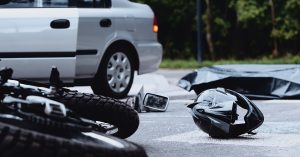
Massachusetts has seen a number of motorcycle accidents, as riders and other drivers return to the road after COVID-19.
Five months from the outset of COVID-19, many motorcyclists are just getting back on Massachusetts roads. Yet already, we have seen several serious and fatal motorcycle accidents in the Boston area, Cape Cod and across the state, a reminder that riders need a little extra room for safety.
In recent weeks, motorcycle accidents have been reported in North Adams, Westfield, Springfield, Wrentham, Taunton, Dudley, Milton, Randolph and Lynn. Toward Cape Cod, motorcyclists have been injured in Bourne, Hyannis, Lakeville, Randolph and Bridgewater.
All these accidents, coming as the state of Massachusetts re-opens, show the need to emphasize motorcycle safety. Motorcyclists have a responsibility to follow traffic laws and wear helmets and protective clothing. In turn, drivers must pay attention to how close they are to motorcyclists and watch when turning or changing lanes.
Commit to drive safely. Obey speed limits and follow traffic laws to reduce your risk of car accidents and motorcycle collisions. Right now, traffic is unpredictable and schedules are less important. After days of little traffic, you may see several hours of cars and trucks speeding. Some vehicles are really racing because there are open roads, very light traffic.
First, take a good look at a motorcycle. Motorcyclists operate on two wheels, without the protection of a windshield and a car or truck frame. Because of this, motorcyclists are more likely to be injured should there be a collision on the road. Large trucks are the most dangerous vehicles on the road. They can hit motorcyclists, then drag them under the carriage. Truck accidents injuring motorcyclists are most likely to be fatal. But motorcyclists are highly vulnerable to any unexpected movement, making it important to give them room.
Raise Your Awareness About Motorcycle Accidents
Fatal motorcycle crashes. Motorcyclists are much more susceptible to crashes than other drivers. According to the National Highway Traffic Safety Administration (NHTSA), motorcyclists account for 3 percent of all registered vehicles in the U.S. and just .6 percent of all vehicle miles traveled. Yet, per vehicle, motorcyclists have 6 times the fatality rate as other drivers.
Follow motorcycles at a distance. If you are driving behind a motorcycle, give the driver additional space. More than you would provide any other vehicle. Recognize that drivers are more likely to be involved in a motorcycle accident when making a left turn in front of a motorcyclist.
Never try to anticipate the motorcyclist’s next turn so you can get moving again. Likewise, do not trust the motorcyclist’s blinker. It may not have fully cancelled out after a prior turn or lane change. You just have to be patient.
Broadside collision. When a driver collides with the side of a motorcycle at a high speed, they can seriously injure the motorcyclist. These are also known as T-bone accidents or side impact motorcycle crashes.
Blindspots and mirrors. Use your mirrors as a guide to help you see the motorcyclist. But remember, motorcyclists can be in your blind spot. Even when you see them, you may not understand how far they are actually away from your vehicle. This is another reason to slow down and give riders more space.
Poor visibility. Respect hazardous weather conditions. Be aware that you may have to really look for motorcyclists, slow down and give all motor vehicles more distance.
Road hazards. Give motorcyclists additional time and space when the road surfaces change. For example, aging roads with potholes, construction work zones and railroad tracks.
Obstructed views. Many motorcycle crashes happen because drivers neglect to look. They may be busy or distracted as they back out of a parking lot or approach a turn. Other times, drivers make bad decisions because of obstructed views. They make the decision to turn or go when they don’t have a full view of the road, parking lot, rotary or intersection. There may be a truck blocking their view from behind or an SUV next to them at a traffic light. Make sure you can see the entire road and continually check your side and rearview mirrors to help you see around large trucks.
Safe driving behaviors. We have now reached August, the last month of summer. Enjoy your time, but please use good judgment. We urge you not to operate a motor vehicle or motorcycle while under the influence of alcohol. Drunk driving, distracted driving and operating while fatigued are highly dangerous. Use caution driving at night, just as you would during the day. You may not realize just how many pedestrians, cyclists or motorcyclists are out this year.
Motorcycle Safety Resources
Finally, if you are a Massachusetts motorcyclist, remember your responsibilities and the resources you have to protect yourself. Under Massachusetts law, motorcyclists are required to wear a helmet when riding to protect themselves from head injuries. Wearing a helmet, along with the right safety gear, is fundamental to protecting yourself. The state of Massachusetts also offers the Motorcycle Ridership Education Program, which offers training for beginning and advanced riders.
Purchasing the right types and amount of auto insurance is also critical for motorcyclists. Read our article, “Massachusetts Motorcyclists: Buy the Right Types of Auto Insurance to Protect Yourself and Your Finances.”
Free Legal Consultation – Boston Motorcycle Crash Lawyers
At Breakstone, White & Gluck, our Boston motorcycle accident lawyers represent those who have been injured by negligent or reckless driving. With more than 100 years combined experience, our attorneys have won several major awards for motorcyclists.
For a free legal consultation, call Breakstone, White & Gluck at 800-379-1244 or 617-723-7676 or use our contact form.
Study: Teen Driving Accidents Claim More Than 7 Lives Each Day of Summer
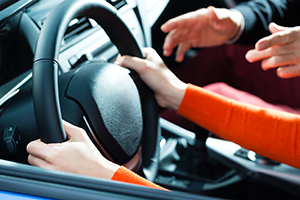 We know many Massachusetts parents regularly talk to their teens about safe driving to prevent car accidents. You should be commended for engaging in this often-stressful conversation.
We know many Massachusetts parents regularly talk to their teens about safe driving to prevent car accidents. You should be commended for engaging in this often-stressful conversation.
We urge you to continue on this summer. Helping teens understand the difference between appropriate and unsafe choices and build strong driving skills is a life-long investment in their safety and the safety of others.
Nationwide, teen driving crashes killed more than seven people each day of summer from 2008 to 2018, according to AAA Foundation for Traffic Safety. AAA recently released the 2020 “100 Deadliest Days” of driving report, once again warning teen drivers and parent to take extra precautions between Memorial Day and Labor Day.
Be aware of the unique risks this summer, AAA says. In response to the COVID-19 pandemic, many summer jobs and activities have been cancelled. With more free time, teens may be driving more. AAA urges parents to read its 2020 “100 Deadliest Days” report, and its Parent Coaching Guide, and to have teens sign a safe driving agreement. With this approach, parents can set clear expectations for teens and refer them to the agreement should they forget. If teens violate the terms of the agreement, they may lose driving privileges for a period of time.
Research on Teen Driving Crashes
Here are a few figures for parents to consider. AAA’s research found more than 70 percent of teen drivers age 16-18 had engaged in unsafe and illegal driving behaviors.
Seat belt Use
17 percent of teen drivers admitted to not wearing a seat belt.
Speeding
47 percent of teen drivers admitted to driving 10 mph over the speed limit on a residential street.
40 percent of teen drivers admitted to driving 15 mph on a freeway.
Texting and Cell Phone Use
35 percent of teen drivers admitted to texting while driving.
Other Driving Violations
More than 30 percent of teen drivers admitted to running red lights and aggressive driving. Meanwhile, 25 percent of teen drivers admitted to drowsy driving.
Parents can influence teens on some of these behaviors by developing a teen driving agreement (there are several available on the Teen Driver Source website). Your conversations with your teens are also essential.
Help Your Teen Drive Safely
Help your teen drive safely and avoid a car crash.
Many states have graduated licensing laws, including Massachusetts. Encourage your teen to follow the Massachusetts Junior Operator Law at all times. Under this law, teens are not allowed to use cell phones when driving in Massachusetts, not even under the new Massachusetts “hands-free” driving laws.
When they have a question, encourage them to ask, review their driver’s education materials or the Massachusetts Driver’s Manual. When drivers understand the law, they are more confident making decisions on the road.
Another opportunity is to drive together. Take turns in the driver seat. When you drive, take the opportunity to show your teen how you follow the speed limit. On a 30 mph street, this means driving 30 mph or less, not 35 or 40 mph. Tell your teen what you are doing and why.
Speed-related crashes are prevalent among teens. Simply slowing down and following other vehicles at greater distances can make a tremendous impact in reducing car accidents. At slower speeds, your teen has more time to stop and if they have a collision, injuries are likely to be less severe. Accident victims are more likely to survive a teen driving accident.
At the same time, parents should understand that when teens speed, they may be intentionally speeding and risk-taking. This is unacceptable. But often, the reason is driver inexperience. Teens need more practice using the gas and brakes, and you may need to explain that traveling “just” 5 mph or 10 mph over the speed limit is dangerous. In fact, you may need to do this a few times, also explaining that teens are more likely to cause injury when they speed and receive a speeding ticket which will impact their junior license.
To help your teen, be patient. Your goal is to demonstrate safe driving techniques and give them feedback when they make a good decision or make a mistake. Yet, if you are too critical, you will make your teen nervous and reluctant to drive with you. Tread lightly but firmly. It’s alright to take a break, but don’t stop trying.
Free Legal Consultation – Boston Car Accident Lawyers
At Breakstone, White & Gluck, our Boston car accident attorneys represent those who have been injured by negligent driving in Massachusetts. Car accidents often result in serious and catastrophic injuries, including head injuries, spinal cord injuries, broken bones, lacerations and death. When victims survive, they may require medical care, have to take time off from work and suffer other financial losses.
Always learn your legal rights after an injury. For a free legal consultation, call our car accident attorneys at 800-379-1244 or 617-723-7676. You can also use our contact form.


